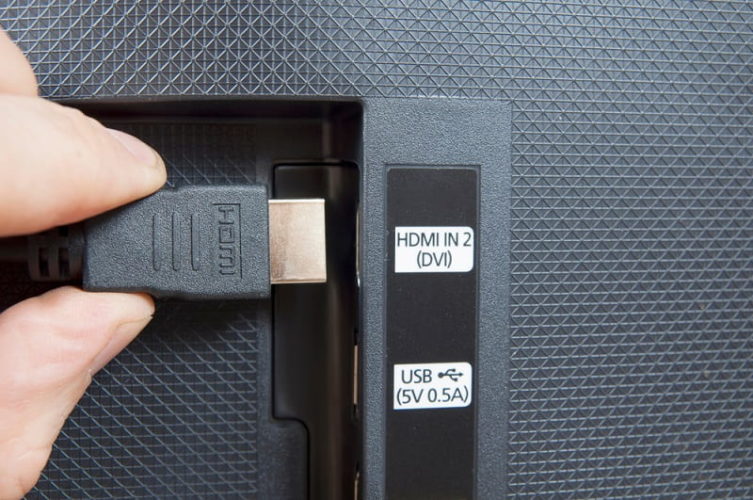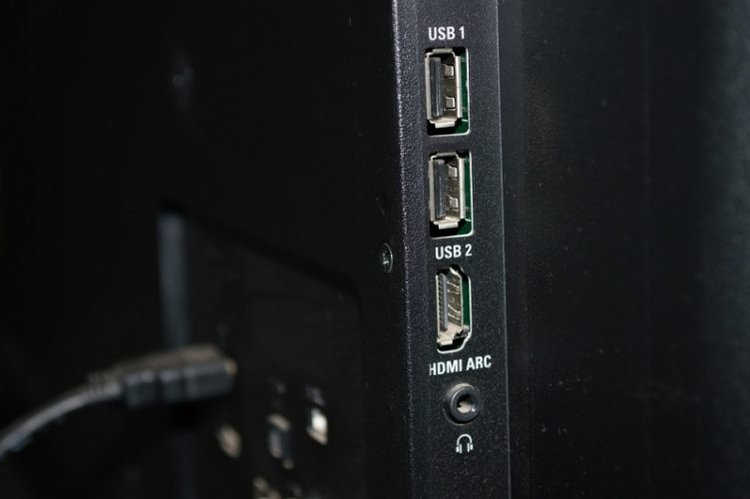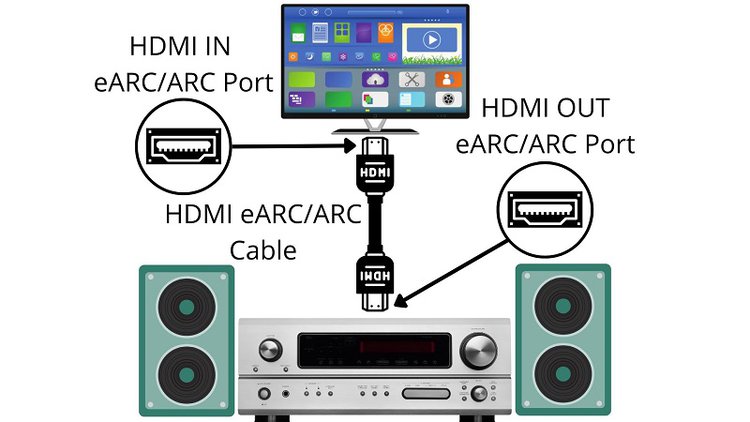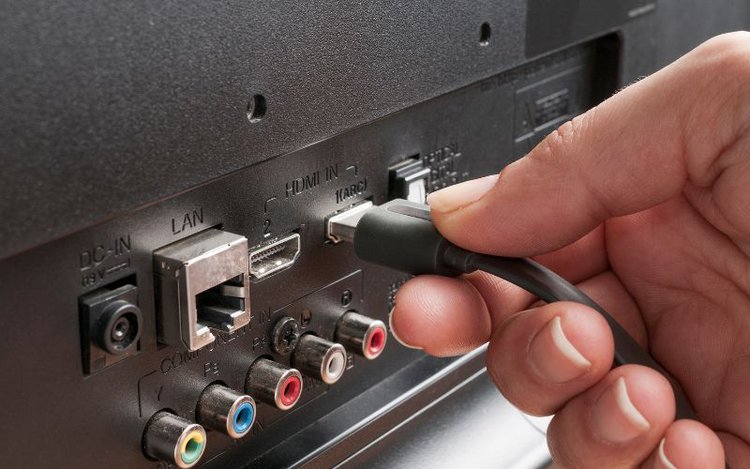HDMI In vs. Out vs. ARC: Essential Differences You Need to Know

What To Know
- HDMI IN receives audio-video signals, while HDMI OUT transmits them to displays, and HDMI ARC allows for two-way audio transmission between a TV and sound system.
- HDMI eARC offers enhanced bandwidth and supports advanced audio formats like Dolby Atmos, unlike its predecessor, ARC.
- Despite their different functions, HDMI IN, OUT, and ARC ports use standard-sized cables and connectors, with eARC requiring a higher bandwidth cable for full functionality.
So, what are “HDMI IN,” “HDMI OUT,” and “HDMI ARC?” And how do they compare to or are different from each other? Read on to know the three HDMI ports better and more.
Quick Navigation
What is HDMI IN?

An HDMI (High Definition Multimedia Interface) connection can send and receive digital audio and video signals between devices using one cable. Based on the ports employed, the cord either transmits or receives the signal.
The HDMI IN (input) port receives signals—for instance, from an AV receiver or Blu-ray player to a TV. The source device sending the signal hosts the “HDMI OUT” port.
Most modern TVs have multiple HDMI ports, which are invariably HDMI IN and not output ports. The only output port on a TV (if any) is the ARC port—more on that later.
What is HDMI OUT?

An HDMI OUT (output) port sends audio-video information to a display device like a TV, monitor, or projector using an HDMI cord.
Unlike HDMI IN, the output port is designed to feed audio and video signals and not receive them. A gaming console, for instance, feeds audio-visual information to a TV or monitor.
What is HDMI ARC?

When HDMI was relatively new, it was a one-way stream. It only sent the audio-video signals—for instance, from a source machine to a television or projector and not back.
However, with HDMI 1.4, the status quo changed with the release of HDMI ARC (Audio Return Channel).
HDMI ARC essentially sends audio signals backward—from a TV to an AV (audio-video) receiver.
For instance, if you have a Blu-ray player and external speakers connected to your TV through an AV receiver, the receiver will transmit the audio data to the speakers and video information to your TV.

But if the video is not Blu-ray player-sourced but from the TV (for instance, a streaming app), the TV has to be connected to the external speakers using an additional cable, usually an optical cable.
Besides an extra cable thrown into the mix, the separate TV and speaker connection also meant having to fiddle with a few more buttons to get things right. Also, optical cables do not support the latest surround sound formats, such as Dolby Atmos.
With ARC’s two-way streaming capability, the audio signals from the TV travel back to the receiver using the already-in-use HDMI cable and are then routed to the third-party speakers.
HDMI-CEC

ARC also includes HDMI-CEC (Consumer Electronics Control) functions. CEC facilitates interaction between connected devices. In other words, you can control all the linked devices using a single controller—the TV remote control.
For example, if you press the TV remote’s power button, all the CEC-linked devices will turn off. Among many other things, the remote control also helps control the soundbar’s volume levels. These are just a few of the several things HDMI-CEC makes possible.
To enable ARC functions, ensure the cable is connected to the HDMI ports labeled as ARC on both the TV and receiver sides.
And to enjoy Dolby Atmos and similar audio formats, your TV should support them. Having an HDMI ARC port alone doesn’t suffice.
eARC
HDMI eARC is ARC’s upgraded version—the “e” stands for “enhanced.” It’s a relatively new advancement and not found on TVs or other devices that are a few years old.
eARC can handle a lot more bandwidth than traditional ARC. That means any lag associated with ARC will not be there on eARC. That means no lip-sync irregularities and zero input lag while gaming.
The greater eARC bandwidth also translates to improved audio performance. eARC supports lossless, non-compressed audio formats (DTS X), which ARC doesn’t.
HDMI eARC is, at times, not enabled by default on your TV, necessitating manual intervention. And, on some TVs, the ARC or eARC setting is available only if the HDMI-CEC option is turned on.
It’s safe to say ARC and CEC are kind of married to each other.
HDMI In vs. Out vs. ARC: A Comparison

Despite differing functionalities, HDMI Input, HDMI output, and ARC ports or connectors have the exact physical dimensions.
They are standard-size HDMI ports and not mini-HDMI or micro-HDMI. They use the same cables, too, since the cords are two-way.
Their ports can be discerned with the corresponding labels. An HDMI ARC port, for instance, is marked as one. Quite similar is the case with HDMI IN and OUT ports.
If the ports are not identified, the device they are located on should make it self-explanatory. For example, an HDMI port not recognized as “ARC” is undoubtedly an OUT port.
Check the product manufacturer’s website or product manual to confirm things if you are not sure. Here is a table delineating the fundamental differences between the three:
| Particulars | HDMI In | HDMI Out | HDMI ARC |
| Basic function | Receive AV signals | Send AV signals | Send/ receive AV signals |
| Devices | TVs, monitors, projectors, etc. | Laptops, DVD players, game consoles | TVs and soundbars |
| HDMI version | HDMI 1.0 and later | HDMI 1.0 and later | HDMI 1.4 and later |
Note: eARC is supported on HDMI 2.1 and works better with Ultra High-Speed HDMI cables.
FAQs
Is eARC Standard with HDMI 2.1?
No, eARC is not a standard HDMI 2.1 feature. HDMI 2.1 ushered in a host of features upon its release, and eARC is one of them.
But eARC is optional, or an HDMI 2.1 connection doesn’t cease to be HDMI 2.1 if it doesn’t support eARC. This reality can be likened to how ARC is not a standard HDMI 1.4 feature.
Can You Convert an HDMI Output to Input?
No, you cannot convert an HDMI output into input or vice versa—at least not directly. The two are wired differently and have discrete functions that cannot be altered.
Does HDMI ARC Require Special Cables?
No, HDMI ARC doesn’t have special cable requirements.
Any standard HDMI 1.4 or higher cable should work fine. However owing to eARC’s higher bandwidth capabilities, you would need a suitable cable—for instance, an Ultra High-Speed HDMI cable.
Conclusion
HDMI was introduced in December 2002. It has had multiple iterations and improvements over the years, collectively contributing to the current ubiquity the standard enjoys.
Through the multiple changes and enhancements, however, HDMI’s core functionality or primary purpose was never tinkered with.
In other words, HDMI output and input ports didn’t become capable of a role reversal. An HDMI output port still transmits information. Likewise, the input port receives the signals.
With ARC and eARC, HDMI made setting things up convenient for people with surround sound speakers or soundbars.
Hopefully, this article gave you a clear idea about HDMI IN, HDMI OUT, and ARC and how they differ. If you want your TV to communicate with your AV receiver, you should now know which HDMI port to use if you didn’t before.
Catherine Tramell has been covering technology as a freelance writer for over a decade. She has been writing for Pointer Clicker for over a year, further expanding her expertise as a tech columnist. Catherine likes spending time with her family and friends and her pastimes are reading books and news articles.

